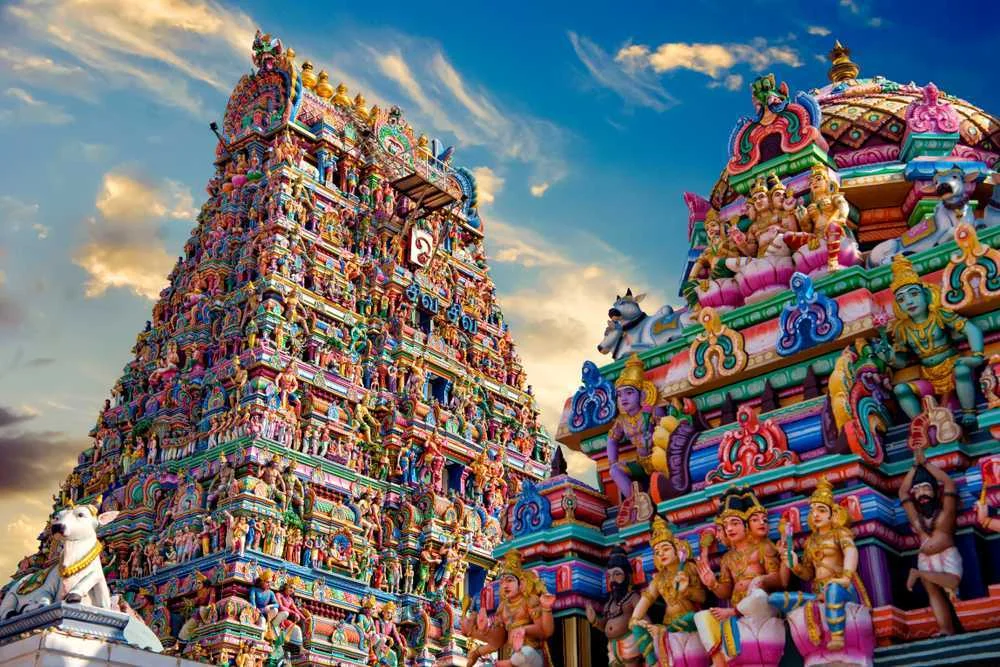You will find a variety of temples all over Chennai. They are artistically built with towering gopurams at the entrance, followed by inner shrines where the deity is housed and worshiped. Most of the temples are built according to the Dravidian architectural style. During festivals, these temples in Chennai come to life with special puja in full swing on one side and a crowd of devotees on the other who pay tribute to the Lord. Some of the best temples in Chennai are Arulmigu Kapaleeswarar Temple, Kapaleeshwarar Temple, and Ashtalakshmi Temple. The most striking feature of temples in Chennai is the beautiful artwork at the top of the structure.
Armenian and Portuguese traders were living in the San Thome area of what is now present-day Chennai before the arrival of the British in 1639. Madras was the shortened name of the fishing village Madraspatnam, where the British East India Company built a fort and factory (trading post) in 1639–40 At the time, weaving cotton fabrics was a local industry and the English invited weavers and native merchants to settle near the fort. In 1652, the Fort St. George factory was recognized as a presidency (an administrative unit controlled by a president), and between 1668 and 1749 the company expanded its control. By 1801, when the last local rulers were stripped of their power, the English had become masters of South India and Madras had become their administrative and commercial capital. The government of Tamil Nadu officially changed the name of the city to Chennai in 1996.

